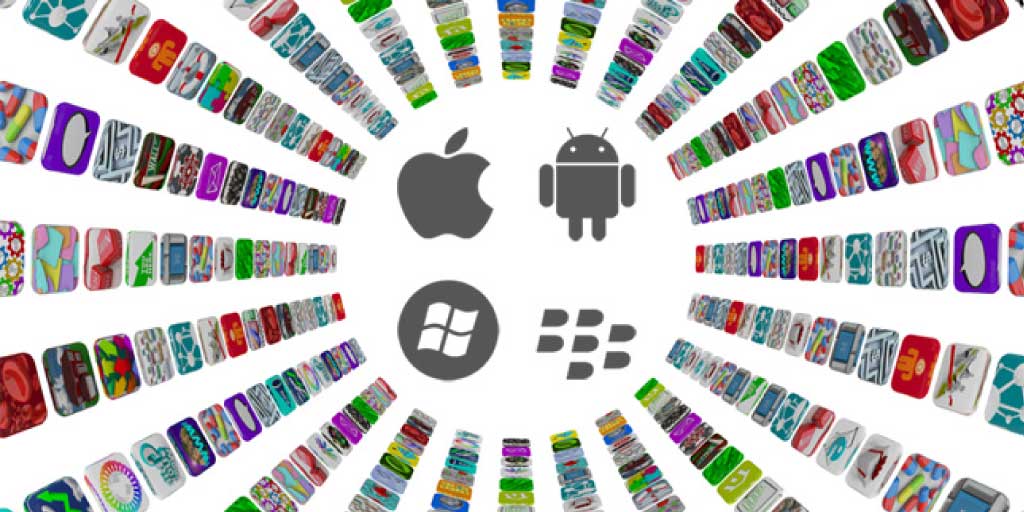Location awareness is only as valuable as it is actionable. In this post, I’ll highlight three different ways app publishers can utilize location to improve their user experience in the physical world:
- Location-based push notifications
- Utilizing complementary sources of data to drive engagement & ROI
- Dynamic personalization of content
Location-Based Push Notifications
Push notifications and location-awareness have been interlinked for good reason: push provides the most immediate method of communication with an app user at a point of interest, as defined by a beacon or geofence. As a result, one of the most successful strategic partnerships Gimbal has is with Urban Airship, which enables publishers to seamlessly utilize Gimbal’s location solution within Urban Airship’s messaging platform.
When discussing Gimbal with potential publisher clients, I find that it is helpful to understand the user’s intent when downloading the app. Put another way – what is the app’s value proposition to its users, and how could Gimbal help it achieve or enhance this goal? For example, RetailMeNot app users download the app to save money with retailer-specific coupons. RetailMeNot is therefore able to enhance their core UX and delight their users by successfully delivering coupon-related push notifications triggered by location. There have been a lot of great articles written on how location technologies help improve core app UX via targeted push notifications, some of those found here and here.
Utilizing Complementary Sources of Data to Drive Engagement & ROI
But not every app can and should seamlessly act on location awareness with a simple push. Imagine a scenario in which Lyft decided to send a “Reminder to use Lyft” push notification to every single user in San Francisco at 1 a.m.? It’s possible that a lot of sleeping Lyft users would be annoyed enough to turn off notifications from Lyft, or even delete the app.
However, Lyft could take a data-centric approach to drive more personalized and targeted user interactions. Knowing that every bar in San Francisco closes at 2 a.m., Lyft could run a push notification campaign targeting only users who are still in bars near closing time. By utilizing Gimbal’s geofences or network of beacons within bars, Lyft could also collect real-time data on dwell times of devices in geofenced/beacon-enabled bars. Using this data, Lyft could further target their campaign at users in a bar near closing time that have been there for over an hour. This would eliminate the possibility of sending notifications to users who had only just walked into a bar and really focus the campaign on activating users who had been at a bar for a while and are more likely to be ready to leave.
In order to ensure that this campaign drives a positive ROI, Lyft could utilize their proprietary data in conjunction with the location data to only target “dormant” users (i.e. people with the Lyft app that have not used Lyft in several months). Ultimately, a ROI-centric, location-aware notification campaign for Lyft might utilize not just a user’s current location, but also dwell-time data, and Lyft’s proprietary user-specific data.
Dynamic Personalization of Content
Leveraging location awareness to drive better engagement with users can exist beyond data-enriched or targeted push campaigns. Content personalization can be enhanced cross-platform using location-centric audience profiles, essentially a “physical world cookie.” I often find myself refreshing Twitter while at sporting events to get more real-time information about the game. But since I follow a bunch of accounts, my timeline typically shows tech-focused and news-focused tweets and not tweets related to the game I am attending. In order to find location-specific tweets, I need to search for the game-specific hashtag (if it exists). What would be more useful would be if Twitter personalized my timeline dynamically knowing that I am at a sporting arena. I would personally find that UX to be much better if I were immediately seeing tweets from beat writers I follow plus content from other people in the arena.
The same principle can extend to cross-channel personalization. E-tailers, like Gilt, can dynamically display better and more personalized content by creating physical location-based shopping profiles of their app users. As long as I have the Gilt app and am logged in, Gilt could personalize and enhance both my in-app and logged-in web experiences without sending me a single notification!
Conclusion
We are still in the early stages of location awareness as a service with many publishers just starting to see the opportunities from incorporating location solutions. While using location to trigger push notifications is understood and utilized for couponing and loyalty programs, there are other applications it can be used for as well. Gimbal has been seeing a demand to understand and leverage location data from a more disparate group of publishers recently. I expect that we will see a few content producers or curators (e.g. Twitter, ESPN, Yelp) testing in-app and web personalization utilizing location data by the end of this year.
And don’t forget: the user always comes first.

